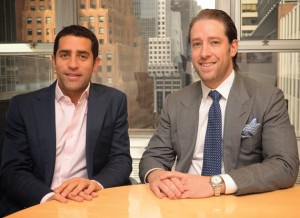Investors continue to view Brooklyn’s multifamily market as one of the surest bets in real estate, but increased government scrutiny and the Rent Guidelines Board’s historic rent freeze are among the factors that have dampened enthusiasm somewhat.
Rent-stabilized properties, in particular, are increasingly being viewed with caution. While investors previously looked at them and saw tremendous upside, they’re becoming more sensitive to tenant backlash and heightened regulation from the city and state. As of 2014, rent-stabilized apartments made up 45 percent of Brooklyn’s occupied rental stock, so any pushback in that segment could lead to a softening in the borough’s overall investment sales market, observers said.
It all sets up for a fascinating 2016. On the one hand, brokers are already seeing a drift toward market-rate properties from rent-stabilized ones. But there’s also a sense that overall activity will continue to be robust, as property owners will aim to take advantage of the current real estate cycle and put more product on the investment sales market.
“Yes, there’s been a softening. Yes, demand has decreased a bit,” said Aaron Jungreis, president of Rosewood Realty Group. “But if you had 25 guys who wanted a building, and now you have 20, that’s still a lot of people.”
Rent Regs Take Toll

Rent Guidelines Board chair Rachel Godsil
As the city remains in desperate need of housing supply, multifamily properties are considered as safe a bet as they come in the New York City market. With job growth remaining strong and Brooklyn’s population — which grew 4.7 percent to 2.62 million in July 2014 from 2.5 million in April 2010 — only expected to continue increasing, market observers agree that demand for housing will stay strong.
As such, the city’s stock of rent-stabilized multifamily properties have long been seen by investors as loaded with upside – a long-term hold with high tenancy rates and the promise of eventual decontrol once rents hit a certain level.
But state legislation passed this year, which raised the city’s vacancy decontrol threshold to $2,700 per month, coupled with the Rent Guidelines Board’s decision to impose a rent freeze on rent-stabilized units for the first time in 46 years, have given investors pause.
Rent-stabilized properties “used to be attractive because you had upside,” said Shaun Riney, the top-producing broker in Marcus & Millichap’s Brooklyn office, “but rents are frozen and there’s an amount of risk that was never before the case.”
Isaac Abraham, co-founder of Witnick Real Estate Partners, which is an active investor in Brooklyn, said that rent-stabilized multifamily is “still a play and still a consideration, but not as much as before.”
“Other people I’ve been speaking to, they also have a very similar sentiment with regards to rent-stabilized multifamily buildings,” he continued, and said the rent freeze had impacted the underwriting on such deals. In the future, Witnick will be looking at other ways to make money in Brooklyn multifamily, such as redevelopment.
Not everyone, however, is that bearish on rent-stabilized assets. While “less friendly rent-stabilization laws” have been a concern for landlords, said TerraCRG’s Adam Hess, he said that he has yet to see such anxiety “translate to less activity or upward pressure on cap rates.”

Shaun Riney
Long-term owners have a “general belief that eventually the environment will change,” Hess added. “Even if it’s less landlord-friendly right now, they’re very comfortable with the fact that the long-term appreciation and the value of the asset is going to overcome any income they may sacrifice with less landlord-friendly stabilization laws.”
Much of the worrying is being done by “old-school investors who have been in the market for a very long time,” he said, but new investors and foreign capital remain confident the sector is a good bet.
David Schwartz, co-founder of Slate Property Group, which has 1,400 rental units in its Brooklyn development pipeline, said he considered the rent-stabilized market to be “overheated for a little while.”
“The frenziness might not be there in the same way,” he added, “but multifamily real estate in Brooklyn and Manhattan is still probably the favored asset class in the country. The way I view it, we had a huge run-up. Anything that goes up like that has to plateau.”

From left: Slate’s co-founders Martin Nussbaum and David Schwartz
Schwartz feels the Rent Guidelines Board’s decision was “a one-time thing,” noting that while “everybody’s assuming this [zero percent] growth rate, I think if you trend it over time, that’s a blip on the radar.”
“The biggest thing we see in New York City is never [an over]supply problem,” he added of the multifamily market. “We don’t supply enough units for a city of 8 million people. We oversupply the wrong units, [where] the market is not as deep as we thought. How many people are buying the $5 million-and-up condos?”
Party Like It’s 2016?
Multifamily property sales in Brooklyn hit $1.96 billion in the first half of 2015, up 49 percent year-over-year and accounting for more than 38 percent of total dollar volume in the borough, according to TerraCRG. The average price per square foot of multifamily buildings in Brooklyn in 2014 was $264, up by 26 percent from $209 in 2013.

Adam Hess
In the third quarter of 2015, however, Brooklyn multifamily sales fell 31 percent to $751 million from $1.09 billion in the second quarter, according to data from Ariel Property Advisors. That was coupled with a decline in transaction volume in the third quarter — to 104 buildings traded in 58 deals, compared to 118 buildings in 69 deals in the previous quarter.
At the very least, these numbers indicate a more selective attitude from investors.
“The seller who’s looking at the deal that sold three months ago and says, ‘I should get more,’ I think that guy has to say, ‘I don’t think I’m gonna get more, but I can still get a great price,’” Jungreis said.
The upside, brokers say, is that 2016 is expected to be a year when a big chunk of inventory hits the market.
Next year “could be a record-breaking year as far as [sales] velocity,” said Riney, who noted that he’s seen cap rates on free-market properties compress amid declining enthusiasm for rent-stabilized properties. “A lot of sellers who were very comfortable in a rising market are now going, ‘I’m not keeping this building until 2018. Let’s swap it into something that makes more sense.’”
That sort of speculation is fueled by property values that, while still robust, are starting to slip – and could potentially be in for a steeper drop moving forward.
“For certain asset classes, we hit over 20 times the gross income a number of times in 2015,” Riney said. “I think we may hit over 20 times the gross income a couple of times in 2016, but that’s going to be an anomaly.”
Hess expects long-term multifamily owners to test the market in 2016 and “take advantage of what they see as the market maybe at the top.”
“They don’t know how much longer that might last,” Hess said. “Interest rates are going up, and there has to be an adjustment on cap rates.”
There’s also plenty of 1031 exchange money floating around, and observers said they’ve already seen it play an increasing role in Brooklyn’s multifamily market through the second half of this year.
“A lot of people are selling in other parts of the country and coming to New York,” Hess added. “I don’t think 1031 is driving the market, but it’s adding a lot more – upping the level and number of offers received on properties.”
